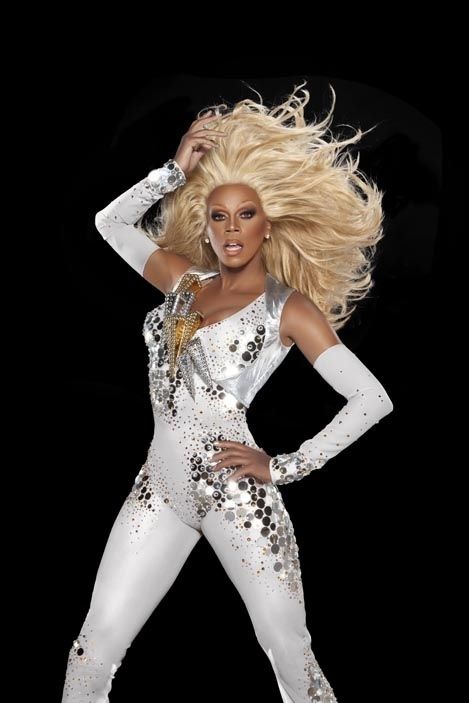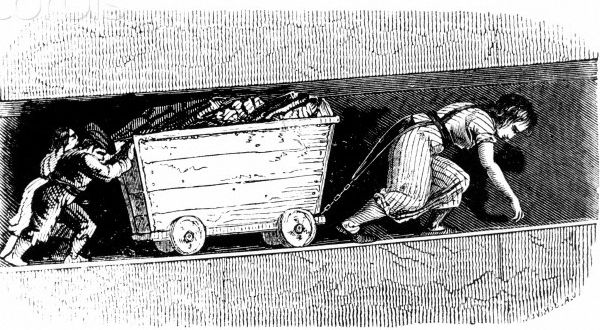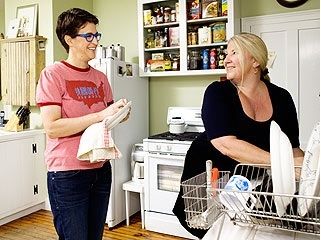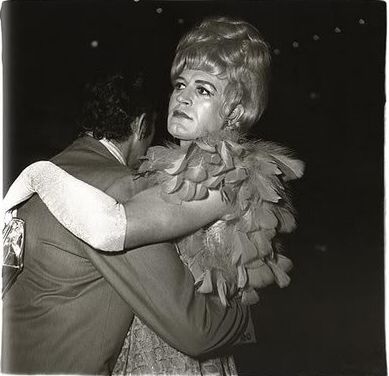(10 am. – promoted by ek hornbeck)
When I started to write this blog about the sex vs. gender debate, I was going to write a nice, intellectual piece, fully referenced, stating my position. But as I sat down to write it, I realized there is no clear-cut solution and presumably, most of the discussion has been decided in favor of the gender ideology, ranging from post-modern feminists in the academy, to the queer community, to the communist left.
In a recent antiwar speech in Washington, D.C., Angela Davis, while giving a laundry list of oppressions, mentioned both gender and LGBT, but failed to mention the word “women.” Sonia Sanchez, in the same event, left out categories having to deal with women’s liberation altogether (although in her poetry she did make the pronoun gender neutral).
At the same time, mainstream feminists (what is generally referred to as the white middle class women’s movement) seem content to deal with reproductive issues such as abortion and contraception, rape and wife battering in a piecemeal fashion, with little overriding ideology or causal framework. (One positive note: there is a new coalition of young women, WORD [Women Organized to Resist and Defend] which seems to be trying to fuse the concepts of sex and gender back together – along with race, class and imperialism. I look forward to seeing what their analysis will be since so far they seem to be mainly an activist group).
So what, if anything, do I have to contribute to this discussion? As a second wave socialist/ lesbian/ feminist born to a first wave socialist feminist, I have worked on projects with third wave feminists and raised a son who is active in the gay-rights movement. I believe that my long history in these communities might give me a perspective worth sharing. I also hope younger third wave feminists will not write me off as one of those smug old second wave feminists who thinks she knows everything.
By the rambling nature of this blog, you can probably tell that I am writing in a stream of consciousness “consciousness raising” style, true to my second wave “the personal is political” roots; although I believe this form is also regaining popularity among third wave feminists.
To begin. I came into feminism out of a Left Trotskyist organization about the same time I left my marriage of several years, right into the arms of the feminist movement. Most of the women, it is true, were middle class and white and, as a working class woman, I wasn’t sure I would fit in. I remember the first time I entered the women’s bookstore and one of the women commented on my “bourgie” $26 dollar JC Penney’s pantsuit. I was working as a secretary in the college where I was putting my husband through school. I was required to wear the pants suit to work (along with pantyhose) even though the professors I worked for could wear jeans. It took me awhile to realize that most of the women in the bookstore wore jeans that cost four times what my pantsuit cost.
I relate this story because this was my first exposure to identity politics and downward mobility and the tendency of the community to identify one’s class position by external secondary characteristics, not our actual class position. This foreshadowed a similar tendency in terms of defining the issues of oppression in terms of our sexuality. Nevertheless I stayed because those women still had something I wanted and wasn’t getting in the male-identified Left.
One of the biggest issues we discussed in those first few heady months in the bookstore was what we called “sex role channeling.” Although it was a middle class group of women, most of them came out of the “New” Left and considered themselves some sort of Marxist or Anarchist. They believed that women’s oppression was partly biological due to our reproductive capacity; but that biology did not have to be destiny since there was no reason society could not be economically and socially structure society to eliminate the disadvantages of reproduction, especially with new technologies.
However, they also believed women’s initial childbearing function had led to a society in which all labor was divided by sex (the “sexual division of labor”) which led to a society in which men had control over women. To reinforce their control, men developed a social ideology, patriarchy, in which women were viewed as innately more passive (they were like cattle, or chattel, and could be owned and traded) and men were the aggressors and protectors (and owners).

Because this sexual division of labor began with the first societies, long before capitalism was introduced, most feminists believed this inequality needed to be overcome before one could have a true class revolution.
These ideas were shared to some degree by all the major feminist writers of the time, whatever their other differences, including Simone DeBouvoir (The Second Sex), Kate Millet (Sexual Politics), Shulamith Firestone (Dialectics of Sex), and Robin Morgan (Sisterhood is Powerful). These writers had two things in common:
- they all believed that patriarchal oppression of women existed before capitalism and had to be addressed before a class revolution against capitalism could be achieved; and
- that “the personal is political,” that we should trust our personal experiences as much as any abstract theoretical tracks when analyzing our oppression (especially since women’s prehistory had been written out of history – including the Marxist texts – and women had not been allowed, in many cases, to read or write books or theorize anyway).
The only problem with the “personal is political” approach was that it often theorized that we could transform relations between men and women immediately, by the way we led our personal lives (by whether we wore jeans or skirts).
And we immediately set out to do this.
We stopped using pink and blue to identify babies by sex. Mothers got their daughters trucks as well as dolls, and kitchen sets for their sons along with transformer action figures. Girls were entered into soccer leagues and boys went to movement classes. For adults, we were encouraged to enter any profession. We refused to be slaves to traditional work such as cooking (our potlucks were frequently pretty abysmal since everyone brought chips and dips) and we protested against the traditions of patriarchal marriage and sexual monogamy (some women remember those days with great joy-me–while other women felt that the proliferation of sexual partners made them feel abused and used). While not many women (and not all men)were physically big enough to be firefighters, some were and they broke the sex segregated job barrier. The situation is even clearer when we looked at fields such as the doctor/nurse divide.

In terms of how we presented ourselves, we tried to blur or eliminate sex role signifiers. Interestingly, there were two major approaches to how this was done. Some of us went for the neutral, androgynous look. We took off our makeup and heels, we cut our hair into a short, but not too masculine, style (pixie’s were in). We wore neutral colors and sensible shoes. Since I came out of the Beat movement, I was very comfortable in black turtle necks and jeans and sandals. Interestingly, the second approach which was more visible in the gay community was to transgress stereotypical sex role classifications. At that time, the gay community mirrored the straight heterosexual community to some degree by adopting one or the other of the traditional masculine or feminine sex roles. So they were already more used to transgressing biological barriers. So in an effort to blur sexual identities, some of the women in our community began adopting traits of both sexes (i.e., a woman would not only stop shaving her legs and underarms, but let her beard grow even if she still wore feminine blouses. A man would start wearing makeup and earrings or, if he were really brave, a cheerleader skirt with combat boots.

Two other points about sex role stereotypes. Kate Millet detailed in her book how the stereotypes changed with the times and that the higher up the class ladder you went, the more distinct were the sex roles. With the advent of capitalism, women had long been divided into women of the working class and women of the bourgeoisie. By the time we reached the Victorian Age in the midst of the industrial revolution, the middle and upper class women were secluded in the home under the rationale that they were too delicate and weak to endure the rigors of the outside world. Yet as Millet shows in her book, mine owners in Colorado during that same period were more than willing to use working class women stripped naked to the waist on their hands and knees to haul coal-carts out of the mines because women were smaller and could fit into the mine tunnels (one of my favorite examples). We see the same stereotypes between the Southern Belle and female field slave before the Civil War. So the middle and upper class female sex role stereotype shifted from a passive cow (or chattel or property) to a “feminine” stereotype that was not only passive but frail and childlike, unable to do much of anything.

The second point I wish to make about sex role stereotypes is very different. In our desire to get rid of all non-biological, socially imposed restrictions, we took the blurring of sex lines to their obvious and ultimate conclusion – the bedroom. We decided that there was no logical reason for not having sex with our own sex. After all, not all sex was for reproduction. People had been having sex strictly for pleasure for centuries, so why not? Besides who would know better what gives a woman pleasure than another woman? So a whole lot of new lesbian feminists were born. Some remained lesbians for life, others resumed relationships with men after the heyday of the Amazon sisterhood was over. (Bisexuality was not an option in those days as the gay community was as “straight” as the heterosexual community and frowned [officially] on those who stepped outside the box of the binary sex roles. Bisexuality was considered nonexistent or perverted.)
The main difficulty with breaking down sex role barriers by sleeping with women was that a number of women in the lesbian feminist community saw this as the solution to the problem of sexism. They had found their answer by stepping outside of the exploitative relationships of men and women in the home. And they could still seem like good radicals because this was as big a step as one could take, individually, outside of the mainstream. Unfortunately, it meant they did not feel they had to fight the bigger war for all women; they settled for a personal solution and a little reform work.
This is not to say that separating oneself from male energy for a time in one’s life was not fruitful. Through this process many women lost their emotional dependence on men (and some learned that just changing the sex of their partners might not be enough to make an egalitarian relationship).

So we broke barriers and we did make a lot of changes. Women started wearing pants and took off their high heels, they came out of the home and into the workplace and into previously all male professions. Unfortunately, most of the unpaid work the home remained in the hands of women. They did a study sometime in the late 1970s or early 80s that showed that the actual amount of time the new “Mr. Mommy” spent with his children was 3 hours a week – and that was usually the “fun” time — to take them to play in the park while Mom cleaned the house instead of doing the tough work of cleaning or homework discipline. The situation may have improved but it is still pretty unequal.
I think our failure to fully deal with this very basic issue of who in responsible for the raising and caring of children (and disabled and elderly) also goes to the very basic issue of:
1) would the capitalist society let us change that dynamic when they had such a good deal by not having all that unpaid labor cut into their profit (the jury is still out on whether they actually can make new profit off of work in the home); and
2) “the personal is political” approach can only see it’s own personal perspective and interests. Since most of the movement was middle class (whether radical feminists Marxists in college or the Betty Friedan educated stay-at-home frustrated upper middle class housewife), neither group had to deal with this question immediately as it was not part of their material reality.
Young women in college were not planning to have children anytime soon and could avoid the issue by using contraceptives and, if those failed, could get an abortion, if they could make it legal. By the time they did consider having children, they would have a husband or a great career and could hire an au pair (like their Betty Friedan counterparts), usually an immigrant woman and/or a woman of color. In recent years, however, we have seen that this apparently doesn’t solve all of the problem as many working professional mothers are now talking about the “mommy track.” At the time, while we talked revolution, many women didn’t seem to be as determined, in fact, to fight for a broader social solution as they felt they still had individual options. Now many of them are beginning to realize this may not be the case.

Although the second wave clearly recognized the distinction between biological issues and socially defined or cultural differences and was determined to break them down, the real separation between sex and gender did not begin until the third wave of feminism in the 1980s. Although the word gender had certainly existed before the 1980s and the idea of the difference between biological differences and historical and culturally determined sex roles (gender roles) had certainly been a major concept in the second wave of feminism, it was the postmodern women’s studies professors in academia who finally made the split and prioritized gender over sex as the “locus for struggle.”
According to this body of feminist work, since sex role differences are about gender, not sex, it is gender issues that caused the beginning of the male hierarchy and oppression of women and it is gender that should be the focus of the struggle. This certainly makes sense in many ways. Just as race and class are not biologically determined, if women’s oppression is not biologically determined, we too should view the oppression against women as culturally determined and focus on that.
There is only one problem with that: unlike the race and class paradigm, there still is a real biological difference in that biological women still produce the babies for the next generation and, while we may soon have totally technologically produced test tube babies, we are not there yet.
Every civilization in the world has spent thousands of years institutionalizing the breeding process, usually at the expense of women. This does not mean that deconstructing gender differences is not critical to ending gender and sex oppression, but to do so at the expense of dealing with the underlying biological and material economic realities of most women’s everyday lives is somewhat delusional. It’s kind of like the JC Penney pantsuit and Levis all over again, only worse.

The real mind-bender occurred, however, when the issues of the gay community were conflated with the lesbian feminist model of ending sexism or gender oppression. The gay community, prior to the second wave of feminism, had always been pretty much defined by the male gay community. The main issues for gay men were the freedom to express their sexuality in an open and honest way wherever it took them -by appropriating women’s gender roles or exploring the relationship between sex and pain (S/M) or the acceptance of dominance and submission as natural parts of human sexuality. Lesbian feminism, on the other hand, had a vested interest in breaking down power imbalances between people, especially categories such as dominance and submission.
It is hard to say how much each of these paradigms was, itself, created by the very sex role channeling to which we have been subjected. Women have traditionally been encouraged to repress sexual desire whereas men have been encouraged to be aggressive and adventurous. So, are some women appalled by S/M and the culture of dominance and submission (which is considered natural in the gay male community) because they are repressed and reticent to things accept these as a natural part of animal sexuality, or even if it is, do they want to try to “educate” humans out of this aspect of animal behavior (much as we try to end war and aggression) in the name of equality after centuries of being the dominated sex. Or are these desires of dominance and submission also socially constructed so that men can win wars and “protect” (appropriate)the breeders (women)? These are real questions.
There are still women who argue that rape is “natural” and women should enjoy it – and we certainly have our share of “enjoyable” rape mythology from the times of the story of The Rape of the Sabine Women to historical romances where the pirate comes and “takes” the lady, freeing her from all responsibility for choosing to have sex in a most unladylike unfeminine manner (this is especially the fantasy of the middle class women where sexuality was repressed). Any woman who has actually been raped or read Fear of Flying gets the difference between fantasizing about rape and the real thing. What I am trying to get at is that many of the realities of male ideas of sexual freedom may also have been “constructions” of gender bias over the years and not natural at all. But the gay community (as well as some heterosexuals) has put the issue of natural biological influences on our lives back on the table.
Here I’m going to admit to a personal bias based on my own experience when people say that they were “born” gay or as a woman or that the desire for pain and dominance or submission in a relationship is biologically determined. As a bisexual (yes, a real one) who has wandered all over the map and changed back and forth many times for meaningful relationships, my experience is that things are not definitely fixed or immutable. I kind of go with Kinsey who said we are all gender neutral until around two years old when we begin to develop a preference. That being said, I believe that any man or woman who wants to assume a different gender identity from that they were born with to be all they want to be has my respect since they are breaking the social codes of patriarchy. As long as they are not implying that women have to be passive and submissive because they are born that way.
Meanwhile, all the emphasis on totally environmentally constructed realities which make real biological and economic day-to-day realities – such as trying to figure out if you can afford the hospital price in the maternity ward or that of an abortion or how to get up two hours earlier to take two buses to take your kid to a very expensive daycare so you can get to your low paying job on time – seems slightly unreal, especially when someone turns around and claims innate biological urges such as the urge to dominate as legitimate. Of course there are still other issues, but I think that’s plenty for now.
Ciao,
Your lesbian feminist socialist sister.
P.S. All the books I mentioned are worth reading and not only from a historical perspective but I want to add two other books to the list. One is brand new, Dangerous Liaisons: The Marriages and Divorces of Marxism and Feminism by Cinzia Arruzza; and Origins of the Family, Private Property and the State by Frederich Engels (even if it has some non-verifiable historical and analytical assumptions, it is still the best work analyzing women’s exploitation in the nuclear family under capitalism).

1 comments
I’m old enough to have experienced to big fractures in the left. The first was when black activists refused to ally themselves with whites (except on their own terms maybe) in colleges around the country under the “flag” of black nationalism. The other was the feminist split form the activist left. The result was the mortal wounding of the activist left that had begun to find some traction. By the time I had gotten involved, of course, the labor movement had already abandoned the left over the War and gone over, largely, to the cultural right that signaled the end of the American labor movement.
The left is now virtually invisible and inconsequential as an anti-capitalist force. It has, in many ways, “won” the day on cultural matters. We can dress as we like and even smoking dope is not generally frowned upon. Gay marriage has become ore accepted and those are all good things. But the fundamental critique we had back in the day is gone–there is no anti-capitalist left of any consequence and no chance of any movement either. The only movement for change with any teeth in it is on the right.
I believed in the feminist movement at the time. But, from a historical perspective now I’m not so sure. It stemmed, in fact, from the elites and was, in the end, enthusiastically supported by the corporate elites for one simple reason: cheap labor. More people in the labor force, the less wages had to grow. The growth of feminism caused all discussion of a “living wage” off the table. Incomes began to diverge in the late 70’s and families for practical reasons had to have two jobs to maintain a standard of living that one job provided. Elizabeth Warren has done excellent work in examining the precariousness of life for the average American then and now. We are, from a workers perspective, much worse off than in the 70s.
I’m not going to blame feminism because, in a way, it was a reaction to and an adaptation for what became a narcissistic society. Men, wanted to be “players” rather than meet their responsibility to their families–women had to take some personal responsibility for their lives because society no longer required men to meet their responsibilities. Whether patriarchy is good or bad is not the point. American men did not want to be patriarchs–they wanted to enjoy themselves and pursue the hedonistic pleasures of the culture of narcissism. So, in a way, the feminist movement became a narcissistic movement focused on itself–radical and fashionable lesbianism became an expression of that and went hand-in-hand with other movements in the culture of small exclusive cultural or ethnic sub-cultures focused on indentity politics.
Well, I don’t want to go on and on–let’s just say the feminism was always about women not society and thus had and has no power to do anything other than become what it is now–yet another booster of ambitious and ruthless capitalist exploitation of everything and everyone only now it does so in 4-inch heels and full war paint.